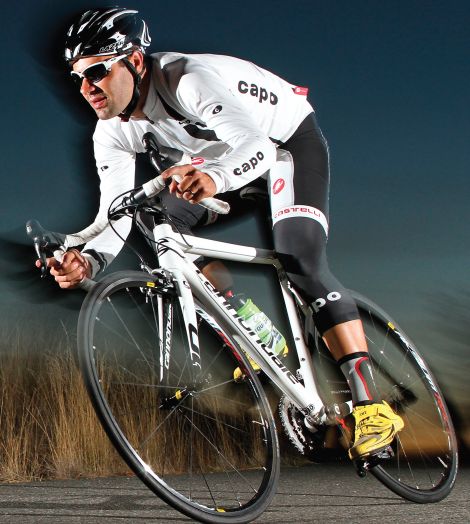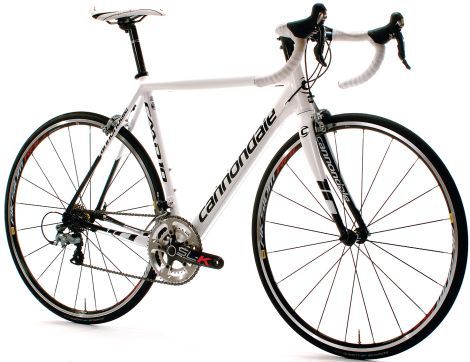Cannondale made their first aluminum frame back in 1983, and in the ensuing years the company did more to advance the performance of aluminum bikes than anyone else. That was before, like everyone else, they too jumped on the carbon bandwagon. The funny thing is, while Cannondale carbon bikes were making waves and winning the Giro d’Italia, the company continued to sell a bunch of the ferrous frames. In fact, Cannondale’s aluminum business continued to do so well that for 2011 they decided to scrap the old design and start blank. Aluminum bike fans can now feel free to party like it’s 1996!
Although aluminum frames once sat atop the popularity tree in the peloton and won plenty of races, the mere fact that they aren’t fashionable now doesn’t mean that they don’t make for good bikes. How does the most modern version of an aluminum bike compare in 2011?

Additional details worth noting are the offset dropouts on the full carbon fork, which are intended to gain some additional compliance. With the idea of maximizing power transmission, the CAAD10 runs with asymmetrical chainstays (taller and square on the drive side). Since it was Cannondale that pioneered the design, don’t be surprised to find a BB30 bottom bracket joining the set of flared tubes. Freed up from the cost of expensive molds needed to make a frame, it’s nice to see a full size run of eight frame sizes (48cm-63cm) made available.

You’d be forgiven to not know what welded tubes look like.
The other part of the CAAD10’s drivetrain package is the carbon FSA SL-K cranks. Not only are these cranks very good looking, but they are also more than stiff enough to deliver the goods with each pedal stroke. All cockpit parts are handled by Cannondale’s own inhouse catalog with the 27.2-millimeter seatpost topped off with a Prologo saddle.

Besides the fork, the only other carbon found on the bike is the FSA crank.

The two words that kept coming to mind while riding the CAAD10 were performance and price. This is a lot of bike and performance for the money. It’s impressive to find the same frame and full carbon fork on all four price points. It has a good price point within the Ultegra group and is probably a better value than a carbon bike in the same price range. The ideal buyer would be a midto entry-level racer or competitive group rider who wants the sure feel of alloy and doesn’t mind feeling some road vibrations.



Comments are closed.